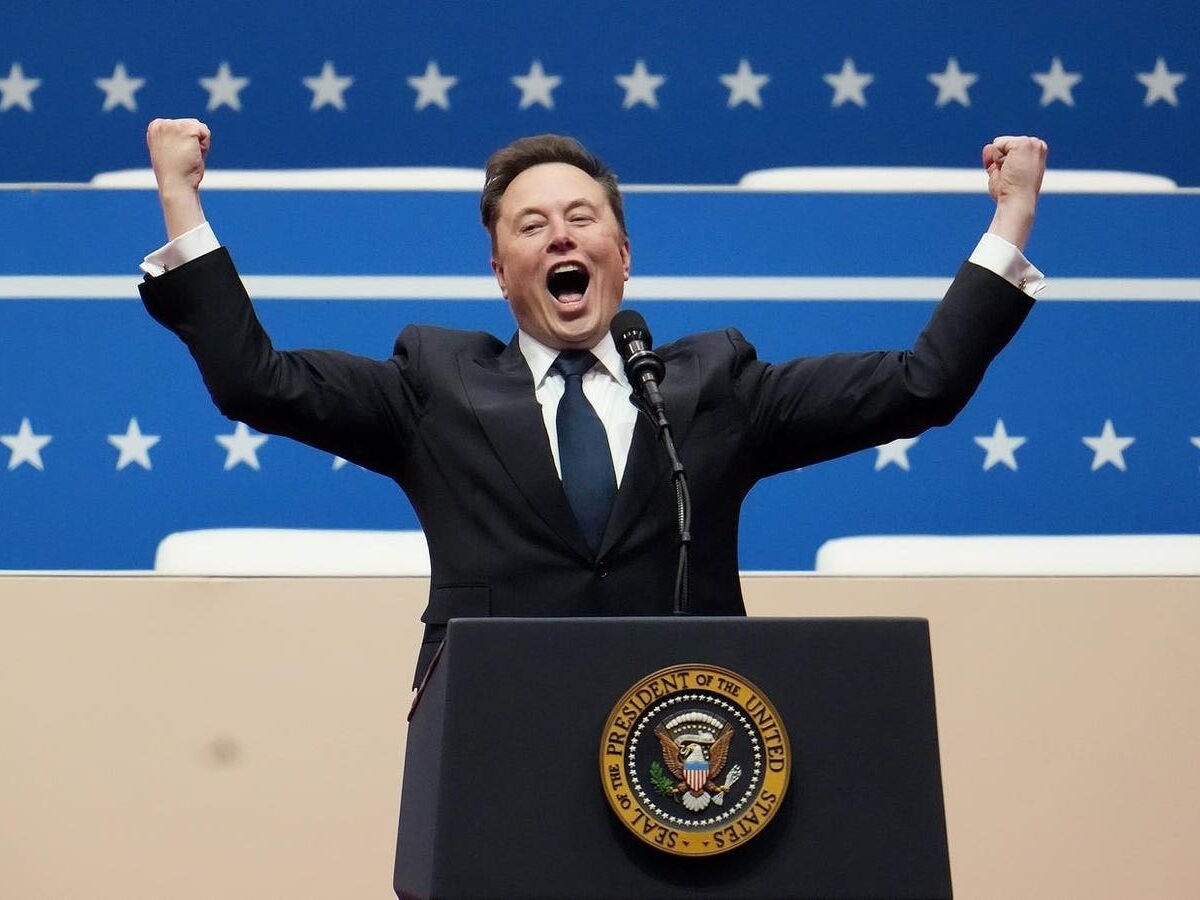As Donald Trump becomes the 47th president, his entry into the cryptocurrency space through meme tokens marks an unprecedented intersection of political power and digital assets. At Washington’s Capital One Arena, where Tesla CEO Elon Musk delivered inauguration remarks, few could have predicted the market turbulence unleashed by the launch of two presidential meme coins.
WASHINGTON, DC – JANUARY 20: Tesla, SpaceX and X CEO Elon Musk arrives to speak during an … [+]
Understanding Meme Coins
Meme coins typically draw inspiration from internet culture and trends, deriving value primarily from community engagement and social media buzz rather than utility.
The recent case of “Hawk Tuah girl” Haliey Welch’s token, which saw its market capitalization plummet from $500 million to $25 million within hours of launch, exemplifies the highly speculative nature of these assets. Traders often describe meme coins as a “pure form of gambling” or equivalent to “buying a lottery ticket,” highlighting their inherent volatility and risk profile.
However, the $TRUMP and $MELANIA tokens represent a more complex scenario. Despite attempts to position them as mere “expressions of support,” these tokens raise critical questions about securities regulation, conflicts of interest, and political funding.
Speculative Nature
The launch of these presidential tokens demonstrated the volatile nature of meme-based cryptocurrencies. Within hours of $MELANIA’s debut, the $TRUMP token experienced a dramatic 50% price drop, plummeting from $75 to $30, before stabilizing around $64. The market capitalization of $MELANIA rapidly reached $13 billion, while $TRUMP’s fluctuations erased approximately $7.5 billion in market value within 10 minutes.
The emergence of these politically linked tokens raises significant regulatory questions. Norman Eisen, an ethics adviser during the Obama administration, characterized the situation as potentially “the single worst conflict of interest in the modern history of the presidency.” The incoming president’s direct connection to these speculative assets, combined with his future role in regulating the cryptocurrency industry, presents unprecedented challenges.
The Strategic Significance of WLF’s Ethereum Accumulation
What makes these meme tokens intriguing is their technical implementation. While the $TRUMP token was initially launched on the Solana blockchain, signaling the network’s growing prominence in the meme coin space, other significant developments have occurred on the Ethereum network in the past few days.
According to on-chain transaction data and Arkham Intelligence Data, World Liberty Financial (WLF), the company behind the $TRUMP tokens, recently converted $20 million worth of USDC into 6,041 ETH, substantially increasing its investment in Ethereum’s ecosystem.
WLF’s Portfolio Structure
Data (accessed on 21st January 2025) from Arkham Intelligence (arkham.intel) shows that WLF’s crypto portfolio, valued at $327.6 million, includes:
- 57,000 ETH worth $184 million as the largest holding (which increased from 39,000 ETH worth $128 million in less than 24 hours)
- Stablecoin allocations of $54 million in USDC
- DeFi protocol holdings including $6.45 million in Aave and $6.21 million in Chainlink
Screenshot showing the key holding and ownership of World Liberty Financial
Technical Architecture and Strategic Vision
WLF’s approach demonstrates careful orchestration across multiple blockchains. Their portfolio composition, with over 55% in ETH and strategic positions in key DeFi protocols, suggests preparation for advanced financial products. The integration of smart contracts has attracted particular attention, especially after Orbiter Finance’s contribution of 10 ETH through their OmniChain interoperability protocol. This technical foundation, supported by major crypto firms including Ripple, Coinbase, and Kraken, points toward ambitious plans for sophisticated financial instruments.
Future Trajectories and Market Impact
Lock-up periods extending through the first year of Trump’s presidency add another layer of complexity to this unprecedented situation. The potential for token migrations, launch of new financial products, and integration with established DeFi protocols suggests these assets could reshape the landscape of politically-affiliated digital markets. In other words, those who support President Trump get rewarded – literally.
While the strategy appears sophisticated, several factors warrant attention and can substantially impact the market:
- Regulatory implications of presidential involvement
- Market impact of potential token migrations
- Lock-up period effects on token value
- Cross-chain security considerations
Even though the prospect of looser regulations around crypto policy has been met with excitement by the industry and had turbocharged a rally in bitcoin following Trump’s victory in November 2024, the combination of political influence and speculative assets might ultimately undermine rather than enhance trust in cryptocurrency markets. This might be challenging the industry to navigate uncharted territory where governance, technology, and finance converge in novel ways, and not necessarily in a good way.
Digital Plutocracy: The Mask Slips
The emergence of presidential meme tokens and their integration with sophisticated financial infrastructure signals a concerning shift in American democracy. While the United States has long been characterized by powerful corporate interests, this direct conversion of political authority into digital assets suggests movement toward a new form of plutocracy, where political power and wealth become increasingly indistinguishable.
The transformation of political capital into literal market capitalization represents uncharted territory, even for a nation accustomed to the influence of wealthy interest groups. This convergence of presidential power, digital finance, and wealth creation points toward entirely new realities in the relationship between democratic governance and economic power.
But perhaps what we are witnessing is not so much a transformation as an unveiling – the traditional mechanics of power and wealth now playing out in plain sight through blockchain transactions and token valuations. The question that looms large is whether the vox populi will remain silent in the face of this stark transparency, or whether they will be kept silent by the very tech giants who control the digital platforms where public discourse takes place. Will we see the promised potential of blockchain?





